The technologies companies use to stay connected and productive are changing along with workplace dynamics. Certain elements have become essential to corporate communication, while others are trends that pass quickly.
Technologies like speech and video are timeless and indispensable. Meanwhile, innovative features such as transcription services and virtual whiteboards have become valuable for dynamic and collaborative work environments.
What is UCaaS?
UCaaS (Unified Communications as a Service) is a cloud-delivered model that integrates a wide range of communication tools, such as voice, video conferencing, instant messaging, email, and file sharing, into a single, streamlined platform.
It allows businesses to unify their communication strategy while ensuring team members can collaborate effortlessly across any device, whether it’s a laptop, mobile phone, or internet-connected desk phone.
Choosing the Right UCaaS Provider: Key Considerations
With a wide array of vendors available, selecting the right Unified Communications as a Service provider can feel overwhelming. To simplify the process, focus on these eight crucial evaluation factors:
1) Business Needs
Consider the unique communication needs of each department. Account for factors like team size, number of remote workers, scalability, and compliance requirements.
2) Unified App Experience
Opt for providers offering an all-in-one solution—voice, messaging, video, and more—via a single intuitive app. A user-friendly interface accelerates adoption and reduces training costs.
3) Integration Capabilities
Ensure compatibility with your existing IT environment. Seamless integration with CRM systems (e.g., Salesforce), productivity tools (e.g., Microsoft 365, Google Workspace), and helpdesk platforms enhances efficiency.
4) Training, On boarding, and Support
Smooth deployment is critical. Look for providers offering comprehensive onboarding support, user training, and 24/7 technical assistance. Number portability should also be available to retain your existing phone numbers.
5) Security and Privacy
The ideal provider employs cutting-edge encryption protocols, strong authentication, and compliance with data protection standards. These are essential for safeguarding business communications.
6) Cost and Value
Choose a provider with flexible pricing plans to match your budget and usage requirements. Be mindful of hidden fees such as setup charges, premium features, or usage-based billing.
7) Reputation and Reviews
Research customer testimonials, third-party reviews, and case studies. A vendor’s history of innovation, reliability, and customer satisfaction can speak volumes about their long-term viability.
The Role of AI in Modern UCaaS Platforms
AI is no longer a luxury add-on, it’s becoming foundational to how UCaaS solutions operate and add value. The most advanced platforms are already leveraging AI in multiple impactful ways.
1) AI for Meeting Summaries and Transcription
Manual note-taking during meetings is a thing of the past. AI now transcribes conversations in real-time, generates auto-summaries with action items, and even suggests follow-ups, making post-meeting workflows faster and more reliable.
2) Predictive Analytics for Call Center Performance
AI-driven analytics help identify call trends, forecast peak traffic hours, and monitor agent performance. Supervisors can make proactive staffing or training decisions, boosting efficiency and service quality.
3) Chatbots Integrated Within UCaaS Systems
Conversational AI is seamlessly embedded into UCaaS platforms to answer FAQs, assist in scheduling, route queries, and provide 24/7 support, reducing workload on human agents and streamlining customer interactions.
Key Features
1) Multichannel Communication
In today’s fast-paced digital world, relying on a single form of communication is no longer enough. Modern businesses thrive on flexibility. That means using various communication methods like video calls, collaborative workspaces, and file-sharing tools. However, juggling multiple disconnected apps can hurt productivity.
UCaaS centralizes all communication channels – voice, chat, video, and more – into one platform, eliminating the need to constantly switch between tools and helping teams stay focused.
This integration streamlines communication workflows and ensures that employees stay engaged and responsive, without the hassle of managing separate platforms.
2) Productivity and Collaboration Tools
Gone are the days when teams passed files around via email or relied on on-premise storage. Traditional methods often resulted in issues, miscommunication, and lost productivity. This was particularly problematic for remote teams without access to local servers.

With UCaaS, collaborative tools like real-time document editing, shared digital workspaces, and cloud storage allow teams to work together seamlessly from anywhere in the world.
Employees can co-author files, conduct live brainstorming sessions, and track updates in real-time, boosting both efficiency and innovation.
3) Support for Flexible Work
UCaaS empowers remote and hybrid teams like never before. Traditional, hardware-bound systems once restricted remote collaboration. UCaaS eliminates those limitations by delivering a cloud-based infrastructure that supports secure, on-the-go access to communication and collaboration tools.
Whether working from home, traveling, or stationed in satellite offices, employees can stay fully connected as long as they have a stable internet connection and proper credentials. UCaaS ensures that remote work doesn’t compromise communication, team cohesion, or access to critical resources.
4) Crystal-Clear Voice Quality
Traditional analog phone systems are notorious for poor call quality, especially when calls are routed through outdated infrastructure. UCaaS leverages VoIP (Voice over Internet Protocol) to convert voice signals into digital data, transmitting them over the internet for crystal-clear audio.
This improvement in voice quality not only enhances user experience but also ensures that important conversations, whether client calls or internal discussions, are always clearly understood.
5) Global Connectivity
UCaaS breaks down geographical barriers. Whether your business has a global presence or is planning international expansion, a cloud-based UCaaS platform ensures consistent communication across all locations. This is one of the many benefits of cloud-based phone systems.
This unified approach to communication reduces the operational silos that previously plagued multi-site businesses. With everyone connected via the same platform, collaboration becomes easier, faster, and more reliable.
6) Simplicity and Reliability
Adopting new technology should never slow your business down. UCaaS platforms are designed for easy onboarding and minimal disruption. Employees can access calling, messaging, and video conferencing through unified desktop and mobile apps, reducing the learning curve.
Moreover, top-tier Unified Communications as a Service providers prioritize uptime and reliability, ensuring your communication systems remain operational, even during high-traffic periods or network fluctuations.
7) Scalability and Adaptability
As your business grows, so too should your communication tools. A quality UCaaS solution is built to scale. This allows you to add new users, integrate new tools, or expand to new locations with ease.
Whether you’re a startup or a multinational enterprise, UCaaS adapts to your evolving needs, offering flexibility without compromising on performance or security.
8) Security and Compliance
With increased digital communication comes greater cybersecurity risk. It’s essential to choose the best UCaaS provider for small businesses in 2025 that prioritizes data protection through end-to-end encryption, secure user authentication, and compliance with industry regulations such as HIPAA, GDPR, and SOC 2.
Look for features like encrypted video, secure messaging, and reliable administrative controls to keep sensitive data safe. Cybersecurity for small businesses has become essential.
UCaaS Trends Shaping Communication in 2025
The Unified Communications space continues to evolve in response to the changing nature of work, user expectations, and technological advancements. In 2025, several transformative trends are defining the next generation of UCaaS platforms.
1) AI-Powered Call Routing
Advanced AI algorithms now dynamically route calls based on real-time availability, skill matching, sentiment analysis, and workload balance. This ensures faster resolution times, fewer dropped calls, and a vastly improved customer experience.
2) Unified Inboxes for Omnichannel Access
Employees no longer need to toggle between different apps to manage voice calls, video meetings, and chat conversations. Unified inboxes combine all communication threads into a single view.
3) 5G’s Impact on UCaaS Performance
The widespread adoption of 5G networks is transforming mobile UCaaS usage by delivering low-latency video conferencing, faster file sharing, and real-time collaboration, even in bandwidth-intensive environments like remote fieldwork or live streaming support.
4) The Rise of No-Code Integrations
Businesses demand flexibility. In 2025, no-code and low-code integration tools allow non-technical users to connect UCaaS platforms with CRMs, helpdesks, or analytics tools, eliminating reliance on developers and accelerating time-to-value.
Smart Collaboration Tools Redefining Remote Work in 2025
Collaboration tools within UCaaS systems are rapidly advancing, offering smarter and more inclusive experiences that align with the needs of distributed and hybrid teams.
1) Whiteboarding and Screen Sharing Innovations
Next-gen whiteboards allow remote teams to brainstorm in real-time using drag-and-drop elements, post-it notes, and shared canvases. Combined with enhanced screen sharing, meetings feel as collaborative as in-person sessions.
2) Asynchronous Communication Tools
Recognizing the global nature of today’s teams, UCaaS platforms now include asynchronous video messages, threaded discussions, and scheduled message delivery to support different time zones without compromising productivity.
3) Smart Meeting Scheduling via AI
AI assistants within UCaaS apps now handle the logistics of meeting coordination, suggesting optimal times based on availability, time zones, and urgency, and even sending reminders or automatically rescheduling conflicts.
Supporting the Hybrid Workforce of 2025
Work is no longer tethered to physical offices. In 2025, hybrid models are the norm, and UCaaS platforms are adapting to ensure seamless communication regardless of where employees work.
1) Mobile-First UCaaS Apps
With more users relying on smartphones and tablets, modern UCaaS platforms prioritize responsive design, offline access, and lightweight mobile versions to keep employees productive on the go.
2) Seamless Device Handoff
Employees can now start a call on their laptop and switch to a mobile phone—or vice versa, without dropping the connection. This cross-device continuity supports real-world use cases like commuting, traveling, or transitioning between meetings.
3) Location-Based QoS (Quality of Service)
Smart QoS settings now adapt based on user location, device, and bandwidth availability. This ensures that call and video quality remain high even in less-than-ideal network conditions, critical for remote and international teams.
OmniCaaS, one of the best UCaaS providers, tailors their services for businesses of all sizes. We offer seamless voice, messaging, and video conferencing in a single desktop and mobile app.
Our platform integrates effortlessly with leading CRM systems, supports high availability, and delivers intuitive features that enhance productivity and communication.
Connect with our team to learn more about our services.


Post a Comment